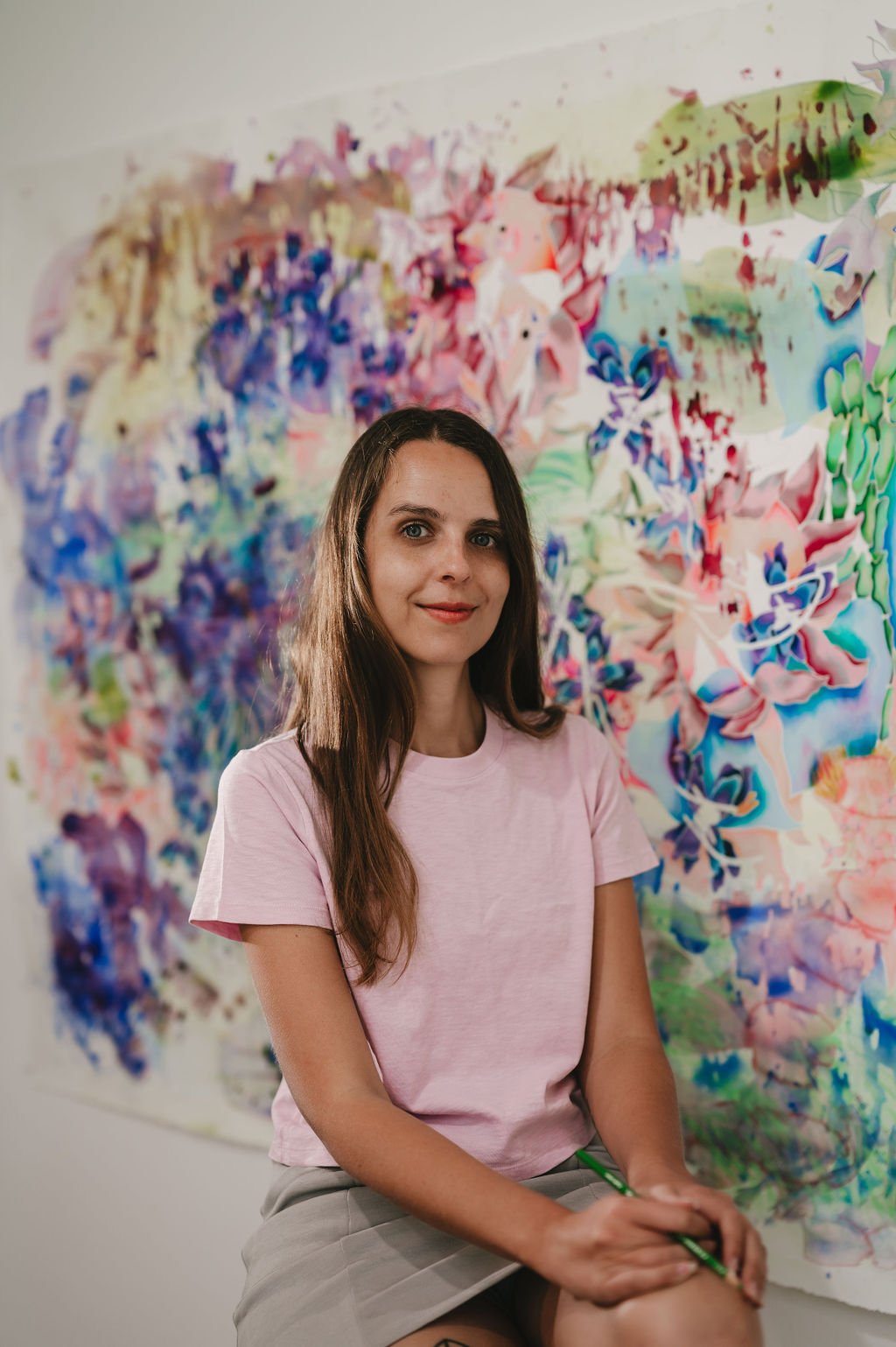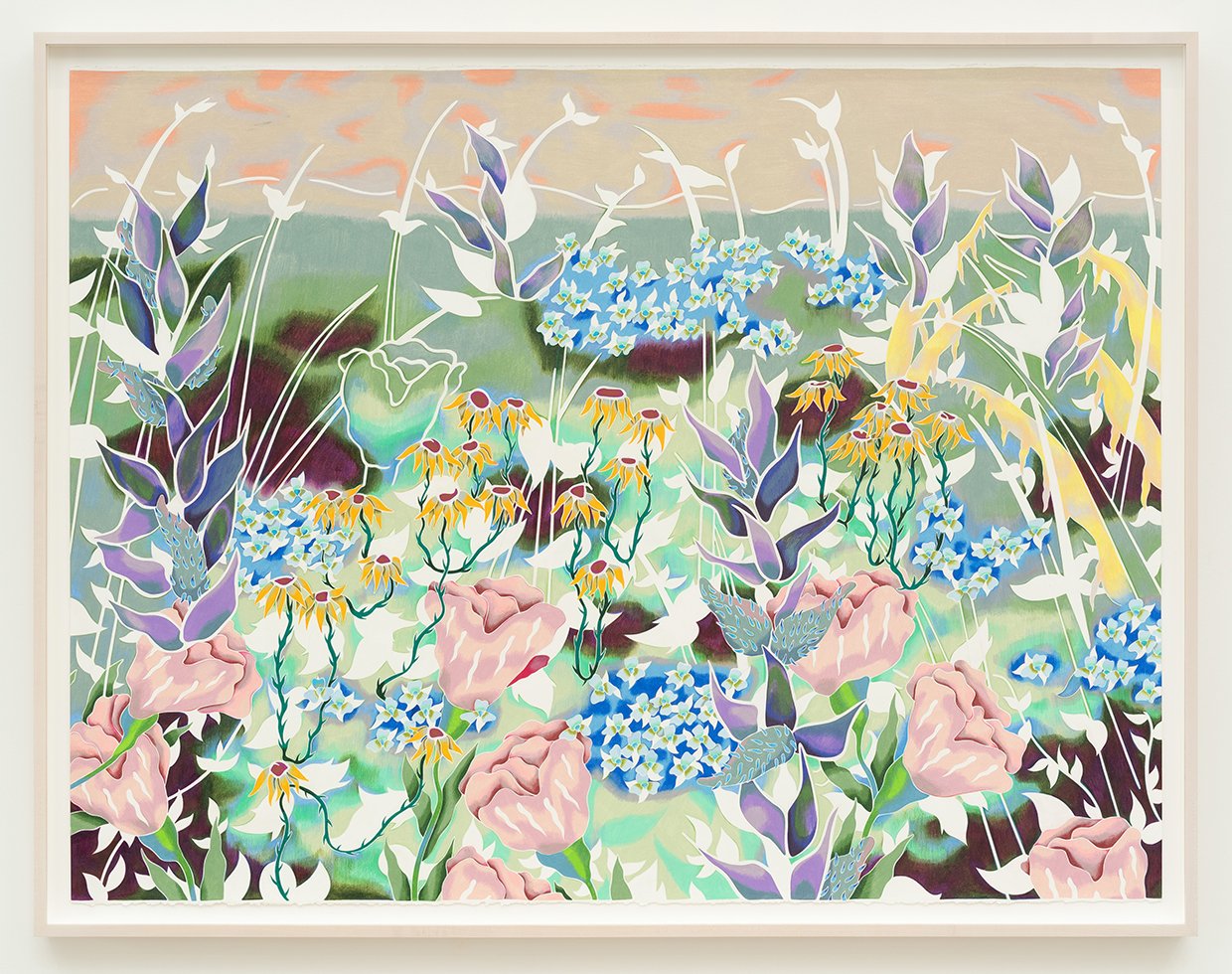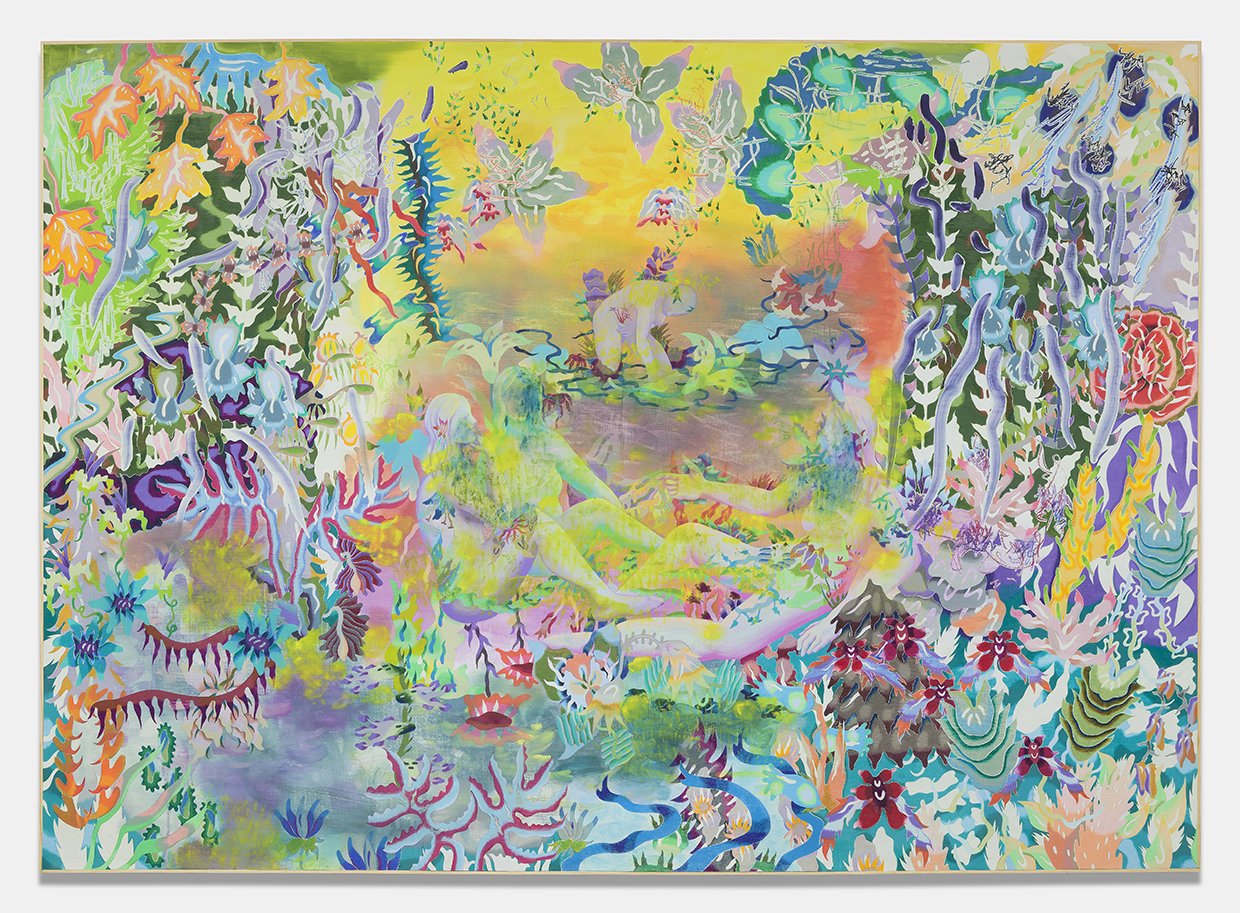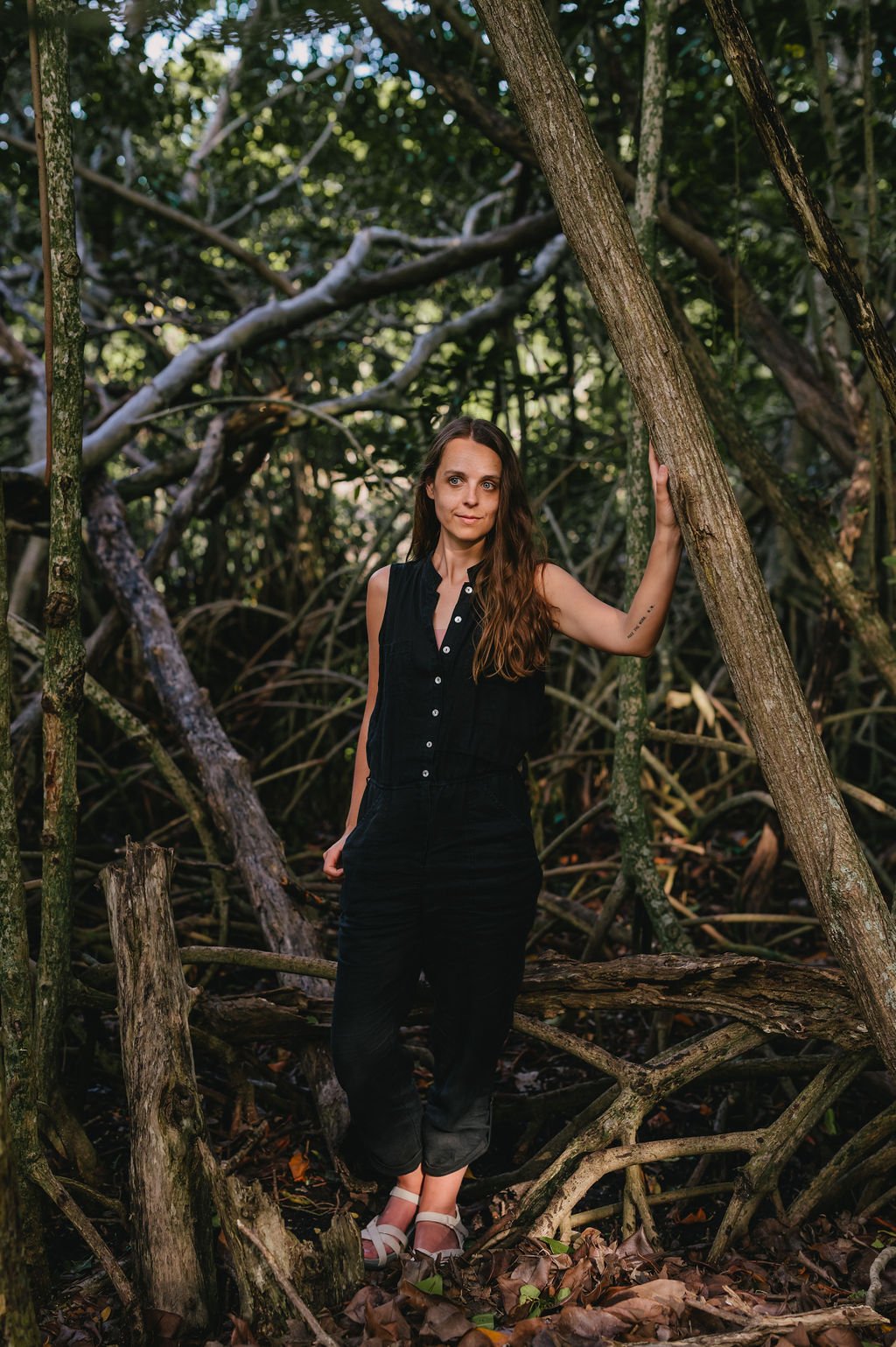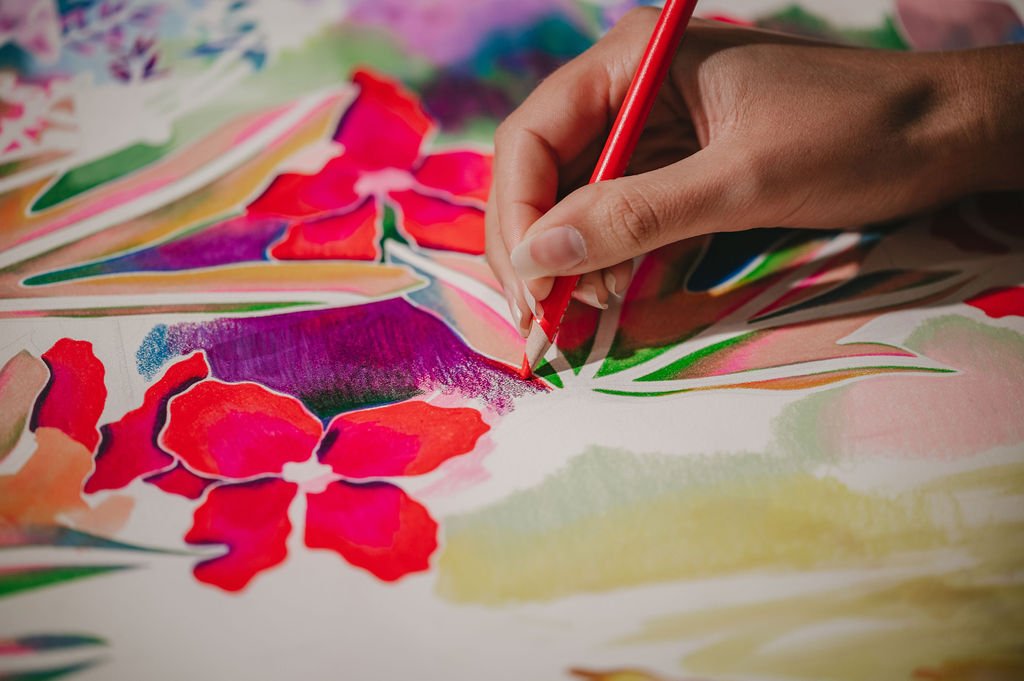April 2023
Sarah Ann Weber
Film directed by Alexa Caravia for Fountainhead Arts
When Sarah Ann Weber was learning how to draw and paint, she developed a love for biomorphic abstraction. The contours found in the natural landscape—the cellular DNA of plants, the swirls of seashells—provided unexpected inspiration. “I always gravitated towards books that had photographs of fossils and other organic shapes. So many organic forms, especially on the cellular level, are abstract. When I moved to California nine years ago, I saw so much abstraction in the physical landscape.”
Today, Weber’s landscapes are inspired by nature and wildlife, to be sure, but her scenes burst into surreal kaleidoscopes of color, movement, and tenderness. Neon-bright vines and leaves encircle femme figures, petals, and each other in soft contours; the artist combines precise pencil drawings with finger-swirled oil paint, a contrast that emphasizes her works’ inherent sense of play. But look closer, between the blooms and blossoms, the dripping pollen: there’s a dagger. A transparent skeleton hides in the soil. The potted plant is drooping.
“With as much growth as there is, there’s also decay,” says Weber. “Sometimes the way I’m camouflaging the figures in the environment can feel violent—or like they’re disappearing into a more aggressive, plant-driven world. Decentralizing the figure is important to my work.” She references What is it that will last? (2021), a reprise of Manet’s Luncheon on the Grass; in Weber’s rendering, the men have been completely replaced by feminine figures. The dominance of men, over both femmes and the Earth, has been subverted. Women are central, merging with their psychedelic surroundings. “When you look at Romantic-era paintings, most of them were made by men, and man is dominating the natural world there,” she explains. “I want to turn that on its head—I want humans to have a much more holistic relationship to the landscape.”
Words by Monica Uszerowicz
